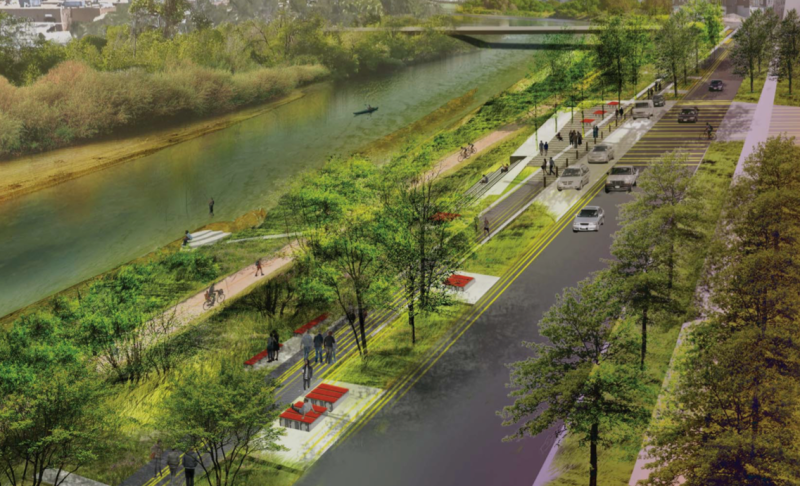A Step in the Wrong Direction: Pedestrian Deaths Hit Highest Total Since 1990

This story is by Trevor Stankiewicz, a policy associate in the Denver office of The Frontier Group, a left-leaning think tank that is part of the larger Public Interest Network of advocacy organizations. It is cross-posted from the organization’s website and responds to the 75 percent increase in Colorado pedestrian fatalities and a 35 percent increase nationally.
When I was 17 years old, I was hit by a car estimated to be driving between 25 and 30 miles per hour. I fractured my patella, tore two structural ligaments in my leg, and suffered nerve damage to my knee. I was in a crosswalk in a parking lot.
And I was lucky. In 2015, of the estimated 70,000 pedestrians involved in car crashes, 1 in 13 were killed. Those are the same odds as pulling an ace from a deck of cards.
According to a new report from the Governors Highway Safety Association (GHSA), pedestrian deaths in the U.S. increased by 35 percent between 2008 and 2017. During the same time frame, all other traffic deaths decreased by 6 percent.
Those statistics show that we have made it safer to be in a car and more dangerous to be outside of one.
Some safety innovations for vehicles have come at a cost to people outside of them. For example, stricter roof-crush standards led automakers to widen the A-pillars (the part of the frame between the windshield and the front, side windows) to keep drivers safe if a car flips over. However, this widening has been shown to impede the vision of drivers, obscuring their peripheral vision and making pedestrians vulnerable to being unseen.
People on foot are also threatened by the rise in distracted driving. Texting behind the wheel and the growth of touch-screen systems in cars are contributing to an epidemic of distraction. A recent study examined 30 vehicle infotainment systems and found all of them to be distracting to some degree, with 23 receiving distraction levels of “very high” or “high.”
Meanwhile, as America’s streets have gotten meaner, Americans have increasingly been purchasing bigger, heavier vehicles that put other road users, including both pedestrians and drivers of smaller vehicles, at risk. In 2008, light trucks and SUVs accounted for less than half of vehicle sales. In 2017, that number was 65 percent. SUVs often make the driver feel safer, but a pedestrian being struck by an SUV is two to three times more likely to be killed than if they were struck by a car, according to a 2015 report by the National Highway Traffic Safety Association.
It’s easy to be numbed by the statistics of pedestrian deaths. But each one of those deaths rips a hole into the lives of family and friends. And it creates an atmosphere of fear that makes it less likely that people will walk to work or the grocery store – making it harder to reduce transportation’s contribution to climate change and eroding our quality of life.
The climbing death toll should be a wake-up call for our leaders to the fact that this is a public health crisis that requires immediate action.
We need to start with how we design our communities. A majority of pedestrian deaths occur on local streets and state highways, according to the GHSA report. Slower speed limits and stricter enforcement of these limits can help protect people on foot or bike. A person that is hit by a car driving at 25 mph has a 25 percent risk of sustaining a serious or fatal injury. Those odds double when the speed is increased to 33 mph.
We can also give people more transportation options, such as public transportation, and invest in better infrastructure for people who walk or bike. Cities in the U.S. with more public transit usage have lower traffic fatality rates, including pedestrian deaths. And just as unsafe streets can create a vicious cycle that drives more people into the refuge of their cars, improvements that get more people biking and walking create safety in numbers that makes it even safer to travel on foot or by bike.
Cities across the country have joined the Vision Zero movement, an initiative focused on reducing the number of traffic deaths to zero. To achieve that goal, all the choices we make – from how we design communities to how we design cars – need to be geared towards keeping vulnerable people safe on the streets.
But there is no time to waste. No 17-year-old should come to know as much about the anatomy of the knee as I did because someone thought the gas pedal was the brake. And no one should have to face the loss of a spouse, a child, a family member or a friend in a traffic crash – especially when we have the tools to keep people safe.


